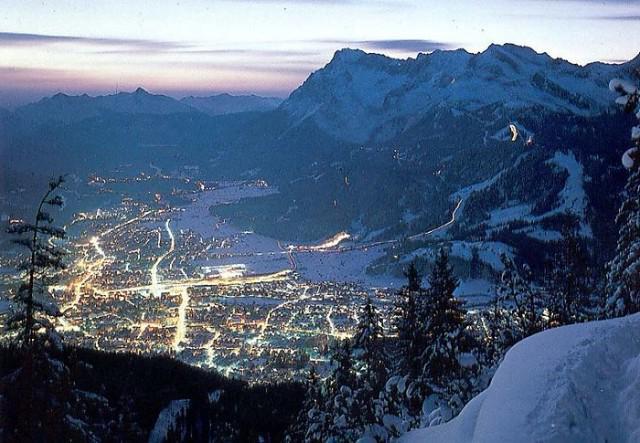The Moluccas are truly a paradise on earth, characterized by picturesque nature in all its diversity.
The landscapes of the Moluccas are distinguished by their unique beauty, characteristic only of these places: picturesque bays, shallow calm straits, coral reefs, mountain slopes with dense evergreen forests.
What were the Moluccas called before?
Located in the Malay archipelago (its eastern part), between the island of Sulawesi and New Guinea, these territories were formerly called the “spice islands”. Indeed, until the beginning of the 21st century, the Moluccas were the main supplier of such expensive spices as nutmeg, pepper, cloves, cinnamon. They grow here on huge plantations.
What were the Moluccas called before? Translated from Arabic, their name literally means "land of kings." The spice islands (Moluccas) are 74.505 square meters in size. km with a total length of about 1300 km from north to southeast and south.
Religious skirmishes in the Moluccas
For a long time, the group of numerous islands, which number 1027, was closed to foreign guests. This is due to the occasional religious conflicts that arose there. So, in 1950, the inhabitants of the Christian faith proclaimed the independent republic of Maluku Selitan in the southern part of the Moluccas. The attempt to secede was immediately stopped by the Indonesian forces, which used force.
The clashes between Muslims and Christians, which grew into an armed confrontation, reached their peak in 1998-2000. And the beginning of everything was a passenger quarrel between a passenger and a bus driver. According to experts, it was the most brutal civil war in decades; about 80 thousand people were forced to leave the region.
After these events, peace and tranquility finally reigned on the islands, which caused a huge influx of tourists from all over the world, geologists and scientists who wanted to study the archipelago in more depth.
Administrative division
The Moluccan island group is divided into provinces: Northern Maluku with the islands of Ternate, Halmahera, Sula and Southern Maluku with the islands of Ambon, Buru, Seram. And today in the waters of Ternate, which were the scene of fierce fighting during the Second World War, there is a huge number of sunken planes and ships.

The tourist pearl of the islands, called the "land of a thousand beaches", is the island of Ambon with the city of the same name. Founded in 1574 by Portuguese navigators, in its guise, he saved the traces of bygone times, although he lost most of the buildings of the colonial period as a result of brutal military bombings. The most striking attraction of Ambon is Fort Victoria, a military fortification reminiscent of the distant military past. To the south-east of the city is Mount Sirimahu with the village of Soia on one of its slopes. Of the attractions that arouse the sincere interest of tourists are the residence of the former Raja and the Dutch church built in 1817. Several ancient settlements are located nearby, each of which has its own megalithic structures.
About the population of the Moluccas
The approximate population, heterogeneous both massively and culturally, is 2.1 million people. Religiously, the inhabitants of the islands are roughly the same; Christianity is mostly proclaimed in the south, Islam in the north. The most populated islands are Ambon and Ternate, a small number of inhabitants is observed on the largest islands - Halmahera, Buru and Seram.
Previously, approximately 130 languages were distributed in the region; over time, many of them were mixed. Local dialects of Ambonese and Ternat received the greatest popularity.
A bit of history
The first European settlements on the Moluccas arose in 1512 and were founded by Portuguese sailors. It was they who established the export of spices to Europe. In 1663, the Netherlands acquired valuable possessions, and during the Napoleonic Wars, the Moluccas, whose old name was “spice islands”, were captured by Great Britain, which disposed of their treasures from the late 18th to the early 19th centuries. At the height of World War II, the "spice islands" were occupied by the Japanese. After its completion (1945), these territories became part of the educated state of Indonesia.
The terrain of the archipelago is mostly mountainous; Mount Binai, located on the island of Siram, is the highest point of the archipelago; its height is 3019 meters.
On the islands - a large number of volcanoes, about a dozen active. Therefore, earthquakes and volcanic eruptions are quite common; For example, over the past 50 years in the region there have been more than 70.
About the climate of the Moluccas
The climate on the islands is humid. The central and southern parts from autumn to spring are dominated by dry winds, in the summer the islands are attacked by wet monsoons. The average air temperature off the coast is from +25 to +27 degrees.
Flora and Fauna of the "Spice Islands"
Most of the territory is occupied by ficus, palm, and bamboo forests, at an altitude of about 1200 meters, mostly deciduous and coniferous trees, as well as kayaput groves - tea tree, which is a source of essential oil used for aromatherapy. In the lower reaches, tree ferns, shrubbery, and various herbs are predominantly found. The fauna is characterized by high endemicity; here you can find species of animals that are characteristic only of these territories: cockatoo parrots, crocodiles, boas, bats, climbing marsupials, tree frogs, birds of paradise.
For many centuries, it was these lands from all the Indonesian islands that were considered the most expensive real estate, as they had the exclusive right to grow expensive spices. Huge plantations of cinnamon, pepper, cloves, palm trees (sago and coconut), nutmeg cause a sincere delight for its scale.